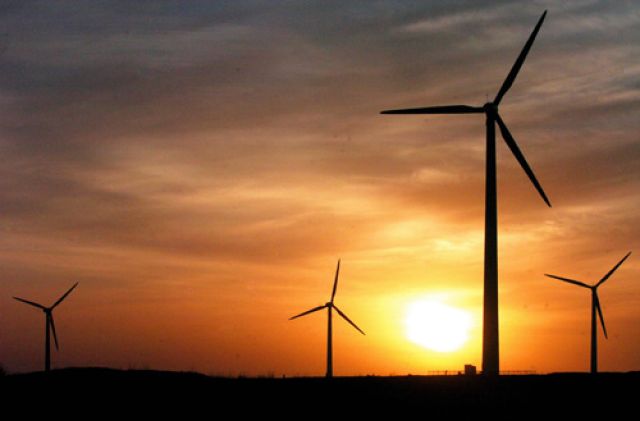
In late June, two important events related to renewable energy took place.
On June 24, the Senate passed changes to the government's renewable energy target, removing the bias towards small-scale energy systems that put many wind farm projects on hold. The scheme set a 20% renewable energy target by 2020.
The changes created a Small Scale Renewable Energy Scheme (SRES) and a Large Scale Renewable Energy Target (LRET). The SRES was left uncapped with a fixed renewable energy credit price, with regular reviews aimed at reducing this figure in the future. The LRET is projected as 41,000 gigawatt hours (GWh) by 2020, ensuring that most of the government's target of 45,000GWh is made from large scale systems.
This sounds like an important step forward, and it will give a boost to the wind industry. With 11GW of wind projects already in the pipeline, and wind energy being the lowest cost renewable energy source in Australia, it is expected that wind will make up most of the LRET.
However, the fine print reveals even the modest target of 20% is unlikely to be met. The 20% figure is only based on current electricity demand — 256 terawatt hours (TWh) — not the actual estimated demand in 2020.
Moreover the government's discussion paper on the changes, released in March 2010, projected no growth in renewable energy between 2020 and 2030. That is, it is expected Australia will still only have 45,000 GWh of renewable energy generated in 2030, or just 12% of energy production.
On top of this, Australia is yet to have its first large-scale solar plant.
In contrast to these policies, the Zero Carbon Australia Stationary Energy Plan was launched on June 22 in Canberra.
The project, a joint collaboration between the Melbourne University Energy Institute and Beyond Zero Emissions, sets the ambitious target of 100% renewable energy by the end of 2020. The plan provides a comprehensive roadmap for replacing all of Australia's stationary energy (including a fuel-switch to renewable electricity for heating and transport) within 10 years.
The report is the culmination of 12 months of work by engineers, scientists, researchers and others, who volunteered their time to perform a study that no Australian government was prepared to undertake.
The plan uses only commercially available technology that is proven and reliable, particularly large onshore wind turbines and Concentrated Solar Thermal (CST) technology. Wind power from 23 new wind farms is proposed to meet 40% of the forecast electricity demand and 12 solar thermal regions are proposed to meet 60% of demand.
The centrepiece of this plan is CST, particularly the “power tower” technology in conjunction with a molten salt storage system.
The fossil fuel industry invests a lot of time and money into promoting the message that renewables can't provide baseload power, because “the sun doesn't shine at night and the wind doesn't blow all the time”.
However, power towers with storage are capable of supplying 24-hour baseload power, and countries like Spain and the US are already installing thousands of gigawatts of capacity right now.
Instead of digging up thousands of tonnes of coal to boil water, CST harnesses the free power of the sun.
The solar power towers work with a molten salt storage system, where the sun is reflected on a central receiver at the top of a tower to heat molten salt to above 565ºC. The molten salt then flows to a nearby tank that acts like a giant thermos that can store the fluid with minimal heat losses for 18 or more hours.
When electricity is needed, the salt is sent to a heat exchange to make steam, which is expanded through a turbine designed for rapid start-up.
This system would work well with the proposed distributed wind network by providing back-up for wind energy low-wind periods. Additionally, periods of high wind allow the CST plants to keep more molten salt in storage for later use.
The plan also involves a serious upgrade in Australia's transmission infrastructure to create a single national grid and a plan to reduce per capita energy use by 33%, bringing Australia in line with other first world countries.
It will also result in the creation of at least 155,000 jobs in construction, operation and maintenance, as well as manufacturing. The real figure is likely to be higher with more jobs needed in planning, design and education. Germany's renewable industry already employs 300,000 people.
The required investment to achieve this transition in 10 years is $370 billion, which could come from a mix of commercial and public sources. This equates to $37 billion per year over 10 years.
While this sounds like a lot of money, the reality is that Australia's existing energy infrastructure is getting old and in need of replacement.
Based on estimates from government energy bodies such as the Australian Bureau of Agriculture and Resource Economics (ABARE), the report has found that the required investment, fuel, operation and maintenance costs needed to sustain Australia's existing fossil fuel power infrastructure would be “$500 billion (Net Present Costs) over the period 2011–2040 which is roughly equivalent to … the [Stationary Energy] Plan”.
When the costs of oil and carbon emissions are factored in (in the advent of a carbon price) the plan will amount to a $1600 billion saving by 2040.
With plans around the country for new coal and gas fired power stations and expansion of the fossil fuel resource industry, the choice between two possible energy futures could not be starker.
As the report states, “social and political leadership is now required in order for the transition to begin”.
[Trent Hawkins, the Socialist Alliance candidate for Wills, is a mechanical engineer working in the renewable industry and is one of the authors of the Stationary Energy Plan. A 16 page synopsis of the plan is available online at www.beyondzeroemissions.org . The full-length plan will be launched on July 14 at Melbourne University.]